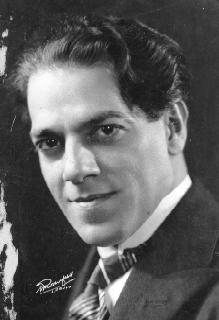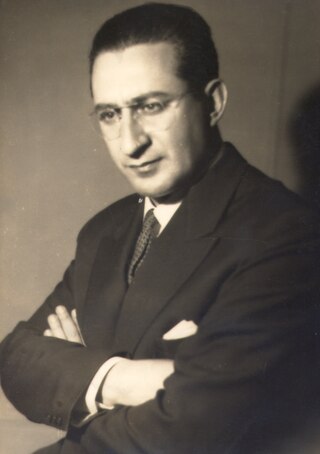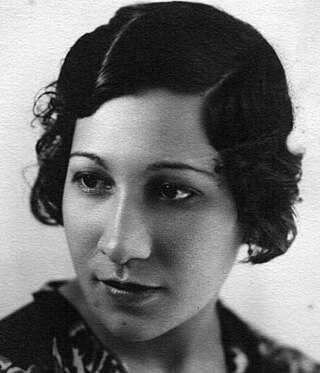
Heitor Villa-Lobos was a Brazilian composer, conductor, cellist, and classical guitarist described as "the single most significant creative figure in 20th-century Brazilian art music". Villa-Lobos has become the best-known South American composer of all time. A prolific composer, he wrote numerous orchestral, chamber, instrumental and vocal works, totaling over 2,000 works by his death in 1959. His music was influenced by both Brazilian folk music and stylistic elements from the European classical tradition, as exemplified by his Bachianas Brasileiras and his Chôros. His Etudes for classical guitar (1929) were dedicated to Andrés Segovia, while his 5 Preludes (1940) were dedicated to his spouse Arminda Neves d'Almeida, a.k.a. "Mindinha". Both are important works in the classical guitar repertory.

Francisco Manuel da Silva was a Brazilian songwriter and music professor, notable for composing the Brazilian National Anthem.

Francisco Paulo Mignone was one of the most significant figures in Brazilian classical music, and one of the most significant Brazilian composers after Heitor Villa-Lobos. In 1968 he was chosen as Brazilian composer of the year.

Il Guarany is an opera ballo composed by Antônio Carlos Gomes, based on the novel O Guarani by José de Alencar. Its libretto, in Italian rather than Gomes' native Portuguese, was written by Antonio Scalvini and Carlo D'Ormeville. The work is notable as the first Brazilian opera to gain acclaim outside Brazil. Maria Alice Volpe has analysed the historical subtext of the indianism movement behind Il Guarany.

Ronaldo Miranda is a Brazilian composer and music professor.

Alberto Nepomuceno was a Brazilian composer and conductor.

Mozart Camargo Guarnieri was a Brazilian composer.
Osvaldo Costa de Lacerda was a Brazilian composer and professor of music. Lacerda is known for a Brazilian nationalist musical style that combines elements of Brazilian folk and popular music as well as twentieth-century art music, as exemplified in the works of his teacher M. Camargo Guarnieri (1907–1997). His compositional output includes works for orchestra, choir, smaller vocal and instrumental ensembles, voice and piano, solo instrument and piano, solo piano, and other solo instruments. He received several musical awards during his lifetime, including the John Simon Guggenheim Memorial Foundation Fellowship, and contributed significantly to the training of younger musicians in Brazil as a professor of composition and theory, member of various musical organizations and societies, and author of textbooks for theory, ear training, and notation.

César Guerra-Peixe was a Brazilian violinist, composer, and conductor.

Radamés Gnattali was a Brazilian composer of both classical and popular music, as well as a conductor, orchestrator, and arranger.

Cacilda Campos Borges Barbosa was a Brazilian pianist, conductor and composer. She was one of the pioneers of electronic music in Brazil.

Henrique José Pedro Maria Carlos Luis Oswald was a Brazilian composer and pianist.

Gerard Henri Luc Béhague was an eminent Franco-American ethnomusicologist and professor of Latin American music. His specialty was the music of Brazil and the Andean countries and the influence of West Africa on the music of the Caribbean and South America, especially candomblé music. His lifelong work earned him recognition as the leading scholar of Latin American ethnomusicology.
The history of opera in Latin America dates back to at least the early 18th century. Newspaper articles suggest that, around the time that Italian opera was introduced to Latin America, it was received with some disdain due to the language barrier. However, translations in the librettos of certain operas suggest that there was greater interest from Latin Americans than the news had credited. Opera arrived in Latin America as a consequence of European colonization. On October 19, 1701, La púrpura de la rosa premiered in Lima in the Viceroyalty of Peru, the first opera known to be composed and performed in the Americas. It is an opera in one act by Spanish composer Tomás de Torrejón y Velasco with a libretto by Pedro Calderón de la Barca, and is the only surviving opera by Torrejón y Velasco. It tells the myth of the love of Venus and Adonis, which provoked Mars's jealousy and his desire for vengeance. Although the libretto follows the Greek myth, the tragic love story is seen as a resemblance of the alliance that was formed from a political marriage between the Spanish and French monarchies. Opera performances were performed also in the country of Mexico. It is within that nation that the first indigenous opera composers of Latin America emerged, with Manuel de Zumaya being considered the first and most important early opera composer. Outside of Perú and Mexico, opera was slower to gain a foothold, and it wasn't until the early to mid-19th century that other nations in Latin America began producing their own opera composers. Many of these 19th-century operas focus on the historical conflict between Europeans and indigenous peoples and were influenced by zarzuela, a form of Spanish opera. Mexican zarzuelas, as well as revistas, soon arose from Spanish influence and gained popularity.

Events in the year 1941 in Brazil.

String Quartet No. 1 is the first of seventeen works in the genre by the Brazilian composer Heitor Villa-Lobos, originally written in Nova Friburgo in 1915 and extensively revised in 1946. A performance lasts approximately eighteen minutes.

String Quartet No. 2 is the one of a series of seventeen works in the genre by the Brazilian composer Heitor Villa-Lobos, and was written in 1915. A performance lasts approximately twenty minutes.

String Quartet No. 4 is the fourth of seventeen works in the genre by the Brazilian composer Heitor Villa-Lobos, written in 1917 and revised in 1949. A performance lasts approximately 23 minutes.

String Quartet No. 17 is the last of seventeen quartets by the Brazilian composer Heitor Villa-Lobos, and was written in 1957. A performance lasts approximately twenty minutes.

Symphony No. 6Sobre a linha das montanhas do Brasil is a composition by the Brazilian composer Heitor Villa-Lobos, written in 1944. It lasts about twenty-five minutes in performance.















